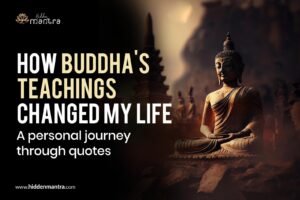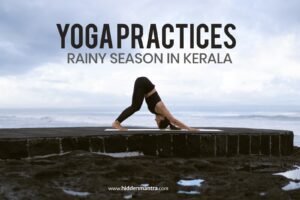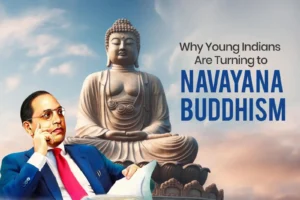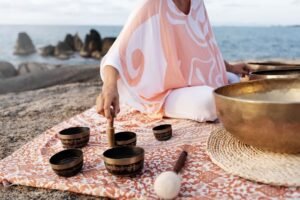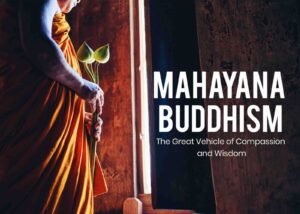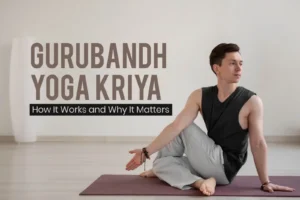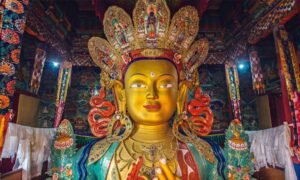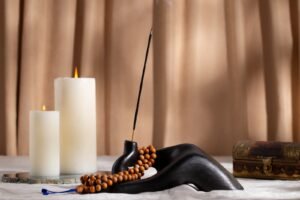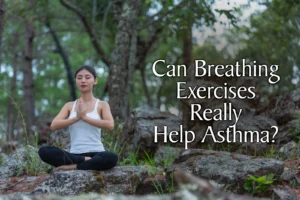Table of Contents
ToggleYoga is like a magical friend that helps us feel strong and happy. Today, we’ll meet one of its special poses from classical yoga called Bhujangasana. It’s like a secret superhero pose because it can make our bodies and minds healthier. So, let’s get ready to explore Bhujangasana from classical yoga and learn its amazing powers!
Bhujangasana Meaning
The term “Bhujangasana” is derived from Sanskrit, the ancient language of yoga. Here’s the meaning of “Bhujangasana” broken down:
Bhujanga
The word “Bhujanga” (भुजङ्ग) means “snake” or “serpent” in Sanskrit.
Asana
The term “Asana” (आसन) means “pose” or “posture.”
So, when you combine these elements, “Bhujangasana” translates to “Cobra Pose” in English. This yoga pose is named after the graceful and powerful stance of a cobra with its head raised.
Bhujangasana (Cobra Pose)Yoga Benefits
- Strong Back – Bhujangasana is like a workout for your back muscles. It makes them strong and healthy, helping you stand tall and sit up straight.
- Flexible Spine – When you practice this pose, your spine gets a good stretch. It’s like a gentle massage for your backbone, making it more flexible.
- Good Posture – Bhujangasana helps you improve your posture. You’ll notice that you naturally sit and stand up straighter after doing this pose regularly.
- Happy Tummy – This pose also massages your tummy organs, like your stomach and liver. It can help with digestion and keep your tummy happy.
- Stress Buster – Bhujangasana can make you feel calm and less stressed. It’s like a mini-meditation that soothes your mind.
- Opens Chest – Your chest gets a nice stretch in this pose, making it easier to take deep breaths. It’s great for your lungs and heart.
- Strengthens Arms – While doing Bhujangasana, you use your arm muscles to lift your chest. This can make your arms stronger.
- Boosts Mood – Some people say that practising Bhujangasana can make them feel happier and more energized. It’s like a natural mood booster.
How to Do Bhujangasana (Cobra Pose)
- Start by lying down – Begin by lying flat on your stomach, with your legs extended and your feet hip-width apart. Your toes should be pointing away from your body.
- Position your hands – Place your hands flat on the ground, directly under your shoulders. Your fingers should be pointing forward, and your palms should be pressing into the mat.
- Relax your forehead – Rest your forehead on the floor. Take a moment to relax and breathe.
- Engage your legs – Keep your legs and feet pressing down into the mat. Your toenails should remain in contact with the floor.
- Inhale and lift your head – On your next inhale, slowly lift your head off the ground. Use your back muscles, not your hands, to lift your upper body. Keep your neck relaxed.
- Chest and upper body lift – As you continue to inhale, lift your chest and upper body off the ground. Keep your elbows slightly bent, and use the strength of your back muscles to lift higher. Imagine your chest moving forward and up.
- Look forward or slightly up – Gently tilt your head back and look forward or slightly upward. Avoid straining your neck by keeping it in a comfortable position.
- Hold the pose – Hold Bhujangasana for a few breaths, maintaining a comfortable stretch in your back and abdomen. Keep your shoulders relaxed, and engage your glutes to support your lower back.
- Exhale and lower down – On an exhale, slowly lower your chest and head back to the mat. Release any tension in your back muscles as you come down.
- Relax – Rest with your forehead on the mat, and take a few deep breaths in this position. Feel the gentle stretch in your spine.
Bhujangasana Tips:
- Bhujangasana should be a gentle backbend. Avoid pushing yourself too hard.
- Focus on the extension of your spine and the engagement of your back muscles.
- Gradually increase the height you lift your chest as your flexibility improves.
Bhujangasana (Cobra Pose) Variations
1. Bhujangasana with Raised Hands
After lifting your chest and head in Bhujangasana, try raising your hands off the ground. Reach your arms forward while keeping your chest lifted. It’s like a cobra ready to strike!
2. Sphinx Pose
If you want a gentler backbend, you can try Sphinx Pose. Instead of fully lifting your upper body, keep your forearms on the ground and raise your chest, keeping your elbows under your shoulders. It’s a cosy way to stretch your back.
3. Cobra Pose Sequence
Sometimes, yoga is like a story with different chapters. You can create a sequence by doing Bhujangasana followed by other poses, like Downward Dog or Child’s Pose. It’s like telling a yoga tale with your body!
By trying these variations and creating sequences, you can make Bhujangasana even more exciting and beneficial for your body.
Cobra Breathing Technique
In Bhujangasana (Cobra Pose), proper breathing is essential for a comfortable and effective practice. The Cobra breathing technique involves coordinating your breath with the movement of your body. Here’s how you can do it:
Inhale: As you begin to lift your head and chest off the ground, take a slow and deep breath through your nose. Imagine your chest expanding and filling with air, just like a cobra puffing up its hood.
Exhale: As you hold the pose and stretch your chest forward, slowly exhale through your nose. Feel the tension release from your back and shoulders, just like a cobra relaxing after striking.
Continue to Breathe: Maintain this rhythmic breathing pattern throughout your time in Bhujangasana. Inhale as you lift, and exhale as you hold the pose.
Remember, the Cobra breathing technique helps you stay relaxed and focused while practising Bhujangasana, allowing you to enjoy the pose’s benefits fully.
Conclusion
In the world of classical yoga, Bhujangasana stands as a symbol of strength, flexibility, and inner balance. Just like a cobra gracefully raising its head, this pose empowers us to reach new heights of physical and mental well-being.
yoga journey, remember that Bhujangasana is your key to a healthier, happier you. Its hidden benefits await those who embrace its gentle backbend and soothing stretch.
For deeper insights and more yoga wisdom, explore our website’s blog session, aptly named “Hidden Mantra.” There, you’ll find a treasure trove of knowledge to enrich your yoga practice and enhance your well-being.
Read our website blog session on Hidden Mantra for further exploration into the world of yoga.



